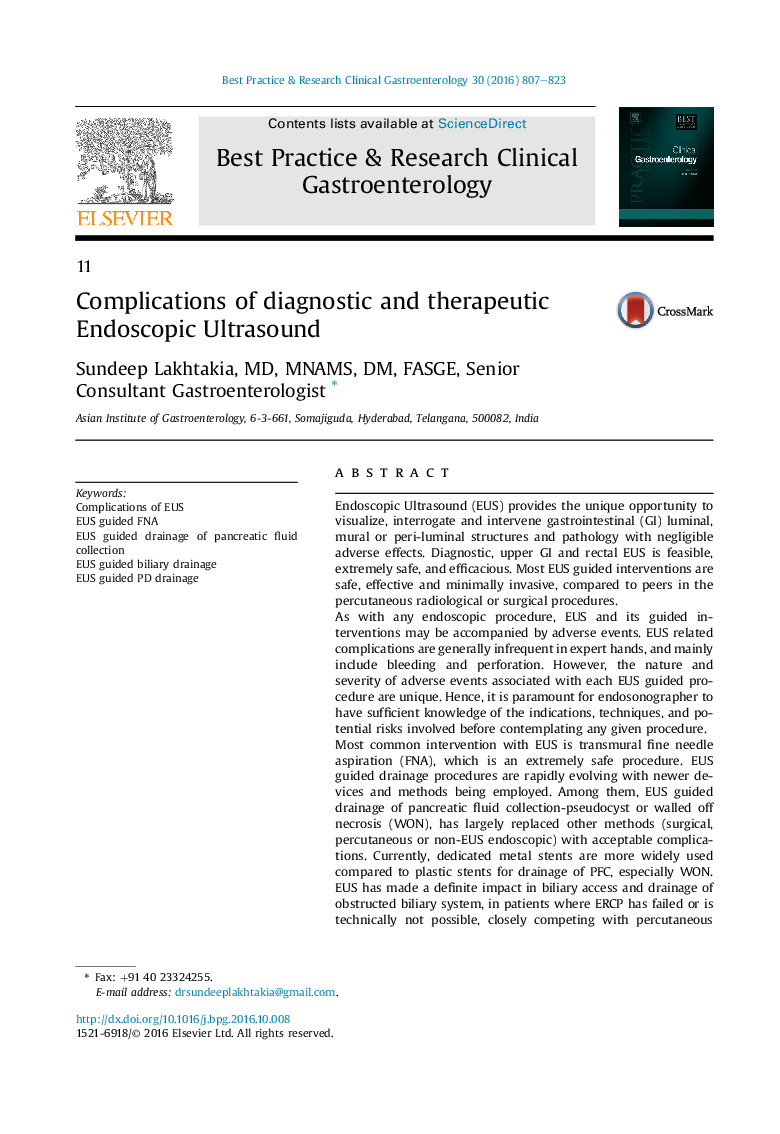| Article ID | Journal | Published Year | Pages | File Type |
|---|---|---|---|---|
| 5654533 | Best Practice & Research Clinical Gastroenterology | 2016 | 17 Pages |
Endoscopic Ultrasound (EUS) provides the unique opportunity to visualize, interrogate and intervene gastrointestinal (GI) luminal, mural or peri-luminal structures and pathology with negligible adverse effects. Diagnostic, upper GI and rectal EUS is feasible, extremely safe, and efficacious. Most EUS guided interventions are safe, effective and minimally invasive, compared to peers in the percutaneous radiological or surgical procedures.As with any endoscopic procedure, EUS and its guided interventions may be accompanied by adverse events. EUS related complications are generally infrequent in expert hands, and mainly include bleeding and perforation. However, the nature and severity of adverse events associated with each EUS guided procedure are unique. Hence, it is paramount for endosonographer to have sufficient knowledge of the indications, techniques, and potential risks involved before contemplating any given procedure.Most common intervention with EUS is transmural fine needle aspiration (FNA), which is an extremely safe procedure. EUS guided drainage procedures are rapidly evolving with newer devices and methods being employed. Among them, EUS guided drainage of pancreatic fluid collection-pseudocyst or walled off necrosis (WON), has largely replaced other methods (surgical, percutaneous or non-EUS endoscopic) with acceptable complications. Currently, dedicated metal stents are more widely used compared to plastic stents for drainage of PFC, especially WON. EUS has made a definite impact in biliary access and drainage of obstructed biliary system, in patients where ERCP has failed or is technically not possible, closely competing with percutaneous biliary drainage. In spite of some complications, recent improvement in devices for bilio-enteric fistula creation and stent designs, has added to its safety and efficacy. EUS guided pancreatic duct drainage remains the most challenging of EUS guided interventions where in-roads are being made.
